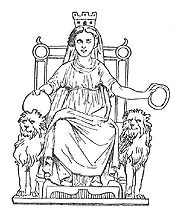National Hispanic Heritage Month is the period from September 15 to October 15 in the United States, when people recognize and celebrate the contributions of Hispanic Americans. During this month not only are the people celebrated, but also their cultural heritage in order to foster a deeper understanding of their roots.
The following are 5 tips to help you celebrate this month in culturally rich and creative ways!
1. Understand and celebrate the significance of the beginning and ending dates of this month.
The beginning date of this month is significant in Latin American cultures because September 15 marks the celebration of independence in Central America, and September 16 marks the celebration of independence in Mexico.
Every year at midnight on this date, Mexico recreates el grito, or the cry of independence made by the Father Dolores Hidalgo in 1810 that lead to the uprising among the poor, enslaved and native people of Mexico that eventually forced the Spanish out of their land. The biggest grito is held in the zócolo or central square of Mexico City, but recently many communities in the United States also hold a grito, including Bolingbrook, Illinois. Near the ending date on October 12 is another also culturally relevant day, el Día de la Raza or the Day of the Race. This is a day to honor the mestizo people, who are those who have ancestry from Spain and the native peoples of Latin America. On this day some communities perform native dances and music, others create memorials for the people lost in the Spanish conquest, and some hold parades to celebrate the Spanish and indigenous cultures, and the way of life that resulted from their encounter, as well as the indigenous cultures who survived the colonization and conquest.
2. Learn about the Hispanic Americans who have contributed to our communities.
Most Americans know about what Cesar Chavez did for workers’ rights and how Selena Quintanilla changed the perception of who can be a popstar, but there are so many other talented and brave people who deserve more attention. Ellen Ochoa was the first Mexican American astronaut, Mario J. Molina was the first Mexican-born scientist to win a Nobel Prize in Chemistry, Felipe Alou was an incredibly talented professional baseball player from the Dominican Republic who helped integrate American teams and Dolores Huerta continues to fight for fair working conditions. Enjoy researching to find out about the amazing people who have made an impact on our society!
3. Prepare some new authentic recipes from Hispanic cultures.
So much of who we are is what we eat. Since no Hispanic people are made out of taco dip, it is time to try something new! A favorite and simple dish found in Venezuela and Colombia is the arepa, a corn dough patty filled with cheese, egg or other ingredients. A Puerto Rican favorite, which will soon become yours, is arroz con gandules, or rice with pigeon peas. A great salsa can add something wonderful to your dish, and now that tomatillos are in season, it is a great time to make your own. This tomatillo salsa is so simple, but incredibly delicious!
4. Watch TV or listen to music from these amazing cultures.
We are so fortunate to be living in times when we can get a glimpse of so many other cultures through their TV, movies and music that we can get on our streaming services and internet. Natalia Lafourcade is a Mexican indie pop artist with the most beautiful voice and melodic songs. Buena Vista Social Club is an ensemble of some of the most talented Cuban musicians who have revived classics from the island’s golden age of music. Herencia de Timbiquí is an amazing contemporary Colombian band who pays homage to their Afrolatino roots of the region of Timbiquí.
With Netflix and Prime subscriptions, you have access to some wonderfully produced movies and TV in Spanish. If you want to learn about “La Decima Musa”, Juana Ines, is a periodic piece that narrates the story of Juana Ines de la Cruz in 17th century Mexico. An unforgettable movie produced by Mexico’s Guillermo del Toro, El Labarinto de Fauno, is a historical fantasy set during Spain’s civil war also available on Netflix.
5. Try to learn and practice Spanish.
Learning another language is not easy, but most people can learn another second language if they are willing to put in the necessary time. If you are interested in getting started, below are some resources for your reference:
Apps
Reading & Listening





